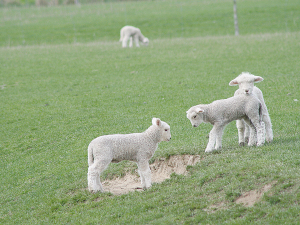How to prevent pneumonia in lambs at weaning
With weaning soon to get underway, some simple management strategies can help prevent the economic losses associated with pneumonia and pleurisy.
 Some simple management ideas can reduce the risk of production limiting diseases like pneumonia and pleurisy in lambs.
Some simple management ideas can reduce the risk of production limiting diseases like pneumonia and pleurisy in lambs.
Weaning, drafting, drenching and shearing create the perfect environment for pneumonia and pleurisy in lambs.
However, some simple management ideas can reduce the risk of these production limiting diseases.
Pneumonia is a disease that causes lesions in the lungs. The most common form is Chronic Non-Progressive Pneumonia which can be caused by bacteria, mycobacteria or viruses.
Symptoms are usually not obvious, although lambs will be slower growing and often pant and cough following exercise.
Lambs with pneumonia are more likely to develop pleurisy, which is where lungs stick to the chest wall. At processing, affected carcasses are downgraded or condemned.
A 2000/2001 study carried out on a database of 1719 farms in Canterbury, Manawatu and Gisborne found the prevalence of pneumonia ranged from 0–100% per flock. But on average, flocks had 24% of lambs affected.
The number of flocks with some pneumonia present ranged from 40–70% – in other words it is very common and costly. Slower growing lambs cost more to feed and then their carcasses are downgraded.
Risk factors include high temperatures and humidity, crowding, stress, dust, excessive exercise, poor ventilation, low immunity and high parasite burdens.
Preventing Pneumonia
Primary sector leaders have welcomed the announcement of a Free Trade Agreement between India and New Zealand.
At Pāmu’s Kepler Farm in Manapouri, mating has wrapped up at the across-breed Beef Progeny Test.
More than 150 people turned up at Parliament recently to celebrate the 20th anniversary of Horticulture New Zealand (HortNZ).
Biosecurity New Zealand says Kiwis should continue to keep an eye out for yellow-legged hornets (Vespa velutina) over the holiday season.
The Push-Up Challenge, an event which combines mental health and fitness, is set to launch in New Zealand in 2026.
Fonterra has slashed another 50c off its milk price forecast as global milk flows shows no sign of easing.